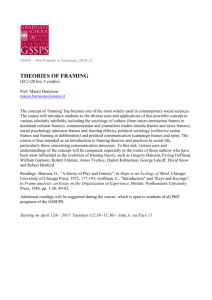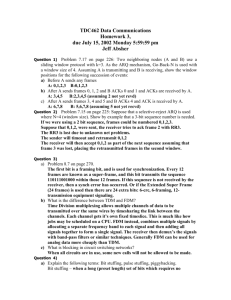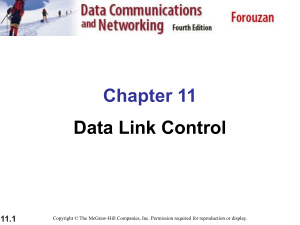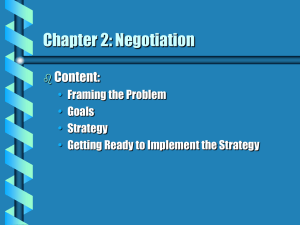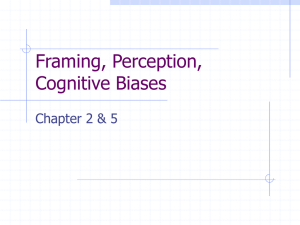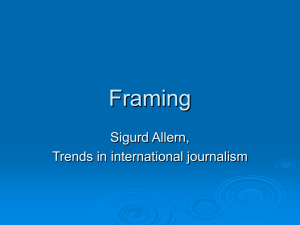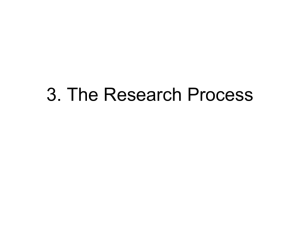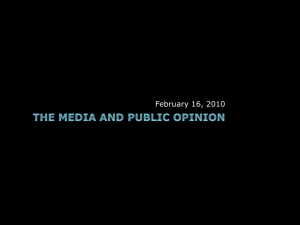perceptual distortion
advertisement
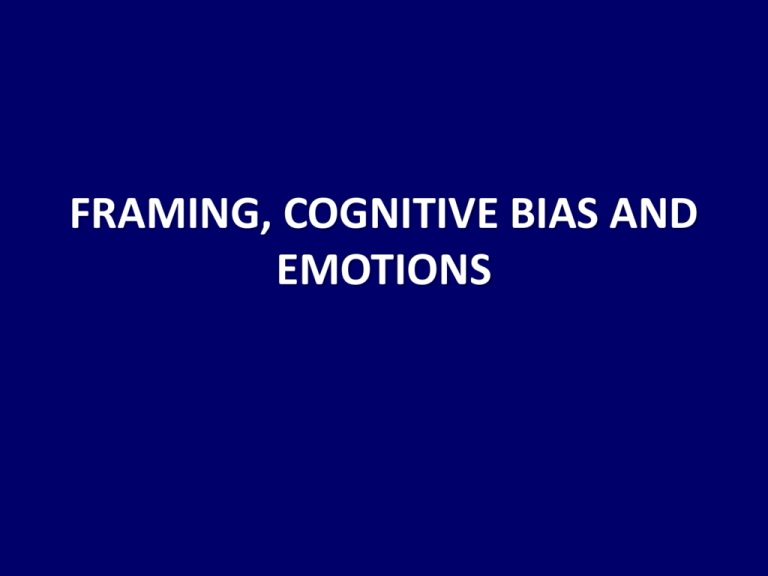
FRAMING, COGNITIVE BIAS AND EMOTIONS How you frame an issue is very much a process of communication- both sending and receiving Factors affecting how a message is encoded or decoded 1. Skill= your writing, speaking, reading and listening skills. 2. Knowledge= the amount of knowledge the sender and receiver have about the subject. 3. Attitudes= the feelings of the sender and receiver towards each other. ( perceptual distortion) 4. Culture=1. Your position in the social culture system, status and hierarchy and 2. Actual differences in culture and/or language both effect the way people interpret communication Perceptual Distortion • Stereotyping • Halo effects-generalization about a variety of attributes based on knowledge of one attribute • Selective perception i.e. you hear what you ‘want’ to hear. ‘Is it a smile or, a smirk?’ • Projection- you project how you might feel in a similar position on to the opponent who may not feel that way at all! CHANNELS • The medium through which a message travels Marshall McLuhan: “The medium is the message” • It is selected by the source who must determine which channel is formal and which informal. • Messages can be distorted if the selected channel has a high ‘noise’ level • Communication apprehension, 5%-20% CHANNELS VARY IN THEIR RICHNESS • Channel richness is the amount of information that can be transmitted during a communication episode. • Richness is a channel’s ability to; – 1. handle multiple cues simultaneously – 2. facilitate rapid feedback – 3. be very personal • Face to face is the richest THE PHYSICAL ESSENTIALS OF MANAGEMENT COMMUNICATION 1. 2. 3. 4. A well functioning brain Expertise and know how Keen eyes and ears A voice well connected to 1 and 3 Barriers to effective communication 1. Filtering-the sender manipulates the information so the receiver will view it more favorably. Tell someone what they want to hear. • The major determinants of filtering are; the number of levels in the organization’s structure. The more levels, the more potential for filtering. Barriers to effective communication • 2. Selective perception– Receivers see and hear based on their needs, motivation, experience and other personal characteristics. • 3. Defensiveness- when people are threatened they put up barriers to understanding. This means in anxiety producing situations you should use multiple communication channels. Barriers to effective communication • 4. Language. The same word may mean different things to different people. This is a function of age, experience and cultural background. Specialization of the work force is also a factor. Framing • “ A frame is the subjective mechanism through which people evaluate and make sense out of situations leading them to pursue or avoid subsequent actions.” • “ Framing is about focusing, shaping and organizing the world around us.” • “ Frames are important in negotiation because disputes are often nebulous and open to different interpretations.” » Lewicki, Saunders, Barry. Pg. 135 Frames • “ Frames are critical...because how parties frame and define a negotiating issue or problem is a clear and strong reflection of what they define as central and critical to negotiating objectives, what their expectations and preferences are for certain possible outcomes, what information they seek and use to argue their case...and the manner in which they evaluate the outcomes actually achieved.” »Lewicki et al. Pg. 136 Frames are controllable • If negotiators understand what frame they are using and what frame the other party is using, they may be able to shift the conversation toward the frame they would like the other to adopt. • Certain frames are more likely than others to lead to certain types of processes and outcomes. For example, parties who are competitive are likely to have positive identity frames of themselves, negative characterization frames of each other and a preference for more win- lose processes of resolving disputes – Lewicki et al. Pg. 143 Emotions • Frequently, emotion in conflict management is a self fulfilling prophesy. A negotiator’s own emotions can ‘determine’ the emotions of the other party and the nature of conflict resolution. i.e. angry negotiators are much less willing to work with each other and more likely to over-retaliate. • Remember, it is much more difficult to not respond ‘in kind’ when confronted with negative emotions. The challenge remains trying to change or reframe the issue into one with integrative possibilities

